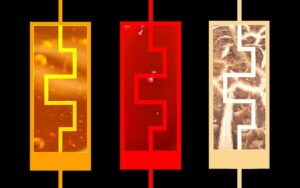
The Temple of Venus in Naples has long been a marvel of ancient Roman architecture, but its construction has now revealed a surprising resilience. Researchers from the University of Naples Federico II have discovered that the materials used in the temple’s construction have remarkably withstood significant geological changes, including subsidence caused by volcanic activity.
This enduring quality has intrigued scientists who sought to understand the mechanisms behind the temple’s stability over the centuries. The team analyzed the structural components of the temple, which dates back nearly 2,000 years, pinpointing specific materials that contributed to its durability.
Innovative Materials and Techniques
The findings emphasize the innovative use of volcanic ash, which was incorporated into the temple’s mortar. This component not only provided strength but also improved the structure’s resistance to the harsh conditions associated with Naples’ seismic activity. The researchers noted that the combination of volcanic ash and lime in the mortar contributed to a chemical reaction that enhanced the material’s durability.
According to the lead researcher, Dr. Maria Rossi, “The use of local materials, particularly the volcanic ash, allowed for a construction technique that was not only effective but also sustainable. This discovery highlights the ingenuity of ancient Roman builders.”
The team also conducted extensive tests on the temple’s walls, which showed that the structural integrity remained largely intact despite the downward movement of the ground beneath it. This is particularly significant given the ongoing geological processes in the Campania region, known for its volcanic history and activity.
Implications for Modern Construction
The implications of these findings extend beyond historical curiosity. Understanding the techniques and materials employed by ancient builders can inform modern construction practices, particularly in areas prone to seismic activity. The research suggests that incorporating similar materials could enhance the longevity and resilience of contemporary structures.
As cities like Naples continue to grapple with the challenges posed by natural disasters, the lessons learned from the Temple of Venus may provide valuable insights. Dr. Rossi’s team is now looking into how these ancient methods can be adapted to modern engineering challenges, potentially leading to safer buildings in vulnerable regions worldwide.
The research not only sheds light on a significant archaeological site but also opens avenues for innovation in sustainable building practices. As the world faces increasing environmental challenges, ancient knowledge may hold the key to future resilience.
The findings will be published in an upcoming issue of the *Journal of Architectural Science*, further contributing to the body of knowledge surrounding ancient construction techniques and their relevance today.






